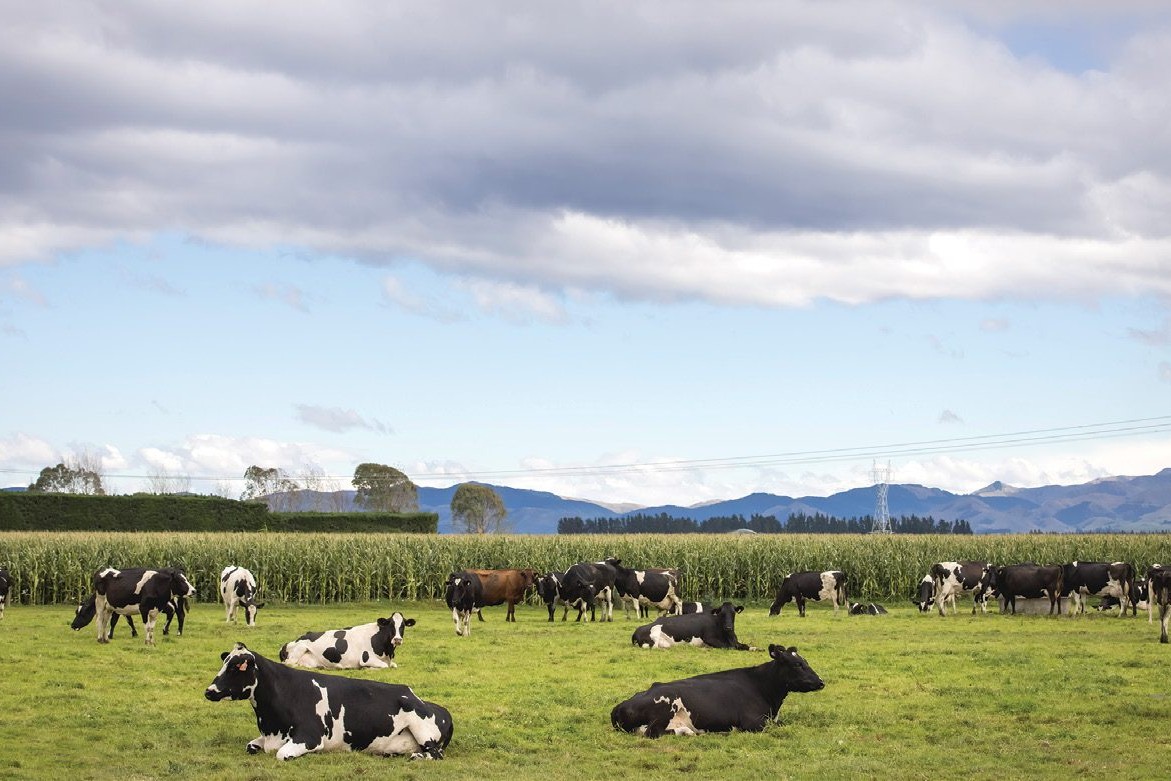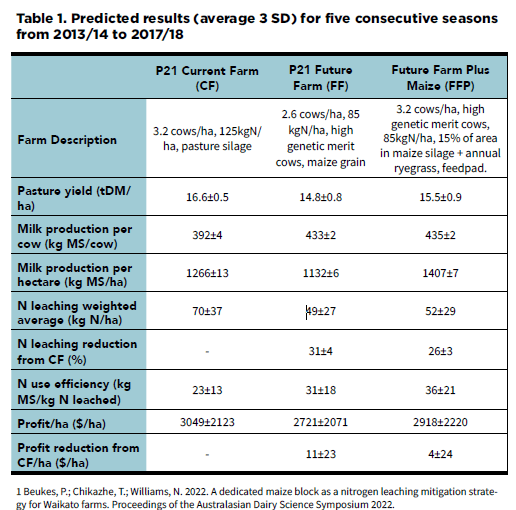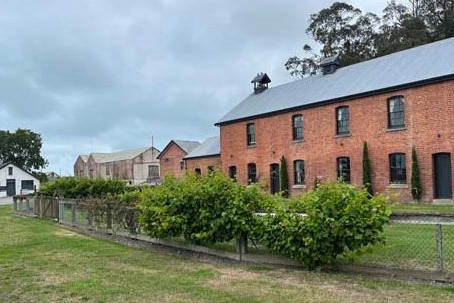Dedicated cropping blocks show promise
Maize silage followed by a winter catch crop; diluting dietary nitrogen and therefore urinary nitrogen and utilising stand-off areas can all reduce nitrogen.

STUDIES HAVE SHOWN growing maize silage followed by a winter catch crop; diluting dietary nitrogen and therefore urinary nitrogen and utilising stand-off areas can all reduce nitrogen (N) leaching. However, there has been no research to quantify the effect on N leaching if all three onfarm mitigation strategies were combined.
A recent modelling study by Pierre Beukes, Tai Chikazhe (DairyNZ) and Pioneer Farm Systems Specialist Ian Williams, investigated the effectiveness of such a system from a profit and N loss perspective.
A Waikato farm with a dedicated maize block was simulated and compared with the two P21 farmlets (Table 1).

The results show that a dedicated crop block with maize silage followed by a catch crop (FFP) has a higher N use efficiency but very slight reduction (4%) in profit when compared to the CF.
Other work has shown that for optimum results the crop block should not be migrated across the farm to reduce the risk of N mineralisation, maize should be followed by a catch crop, a feed pad should be utilised to reduce feed-out wastage and capture effluent, and the home-grown crops should be used to reduce imported feed-N.





